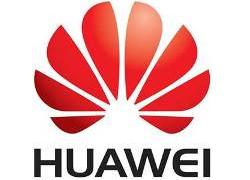Huawei together with analyst firm IHS, yesterday held the fourth Optical Network Innovation Conference in Nice, France, with the theme “CloudOptiX — Simplifying Networks Towards the All-Cloud Era”.
The conference brought together over 200 executives from global operators, industry partners and analyst firms to exchange viewpoints about how to restructure transmission networks to facilitate all-cloud network evolution.
As new services such as video, virtual reality and augmented reality continue to emerge, demand for networks with ultra-high bandwidth and ultra-low latency will continue to grow exponentially. Guaranteed low latency connections will be critical for successful network cloudification.
With the continuous expansion of their networks and services, operators are also under pressure to improve network efficiency and lower operations and maintenance (O&M) costs. Defining how the transmission network will evolve to meet current and future challenges in an all-cloud era is a key issue for the telecom industry.
In an all-cloud era, Huawei believes that the first step is to modernise the basic architecture in three core areas:
- One Operation System Cloudification: to realise whole life-cycle planning, management, and control through NCE, as a full service lifecycle management platform, it help operators drive O&M efficiency and increase profitability.
- Two Network Architecture Cloudification: backbone network to be meshed, metro network to be unified transport:
- On the backbone network, the DC-centric OTN+OXC meshed backbone network provides optimal latency for DC interconnections, enabling one-hop transmission between any two cities required by many networks such as those used by airlines.
In the metro domain, video services are driving vertical traffic growth. The OTN to CO (integrated service access node) networking concept simplifies optical networks, and enables the construction of a large-capacity metro-domain integrated bearer network with one-hop transmission capability between COs and DC, to meet the bandwidth and experience demands of video and cloud private line services.

Three Hardware Resource Cloudification: Wavelength resource cloudification through OXC, layer1 ODUk pipe cloudification through cluster OTN, CO site service access cloudification through MS-OTN.
The solution addresses operators’ current demands and future challenges by enabling them to realise pooling of wavelength and sub-wavelength resources through “OXC+OTN”; achieve CO site resource pooling through “OTN to CO”; and simplify network architecture through Meshed backbone and OTN in the metro.
Richard Jin, president of Huawei Transmission Network Product Line, said “OXC+OTN and OTN to CO reconstruct the infrastructure network architecture and help operators build a future-oriented simplified network architecture with one-hop transmission.
The Network Cloud Engine integrates all functions including planning, management, control, and analysis to help operators improve O&M efficiency. These competitive premium private line products are designed to help operators increase revenues and achieve business success.
Digital transformation is bringing new development opportunities. Network construction and evolution is moving from a technology-driven to a business-driven approach. With business at the core of Huawei’s All-Cloud Network, it will deliver agile, intelligent, efficient, and open networks that empower customers to achieve commercial success.
Comment on this article below or via Twitter: @ VanillaPlus OR @jcvplus






